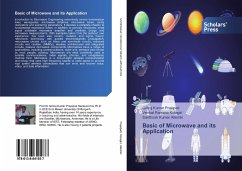Introduction to Microwave Engineering extensively covers transmission lines, waveguides, microwave striplines, microwave tubes, cavity resonators and scattering parameters. It devotes a complete chapter to fundamental microwave tubes, in addition to periodic structures, small signal solidstate microwave amplifier and oscillator design and microwave measurements. With examples taken from the authors' own experience, this book also covers: -network and signal theory; -electronic technology with guided electromagnetic propagation; -microwave circuits such as linear and non-linear circuits, resonant circuits and cavities, (MMICs), wireless architectures and integrated circuits; passive microwave components. Microwaves have a range of applications, including communications, radar and, perhaps best known by most people, cooking. Microwaves are most commonly used in satellite communications, radar signals, phones, and navigational, medical field. Microwave is a line-of-sight wireless communication technology that uses high frequency beams of radio waves to provide high speed wireless connections that can send and receive voice, video, and data information.
Bitte wählen Sie Ihr Anliegen aus.
Rechnungen
Retourenschein anfordern
Bestellstatus
Storno








